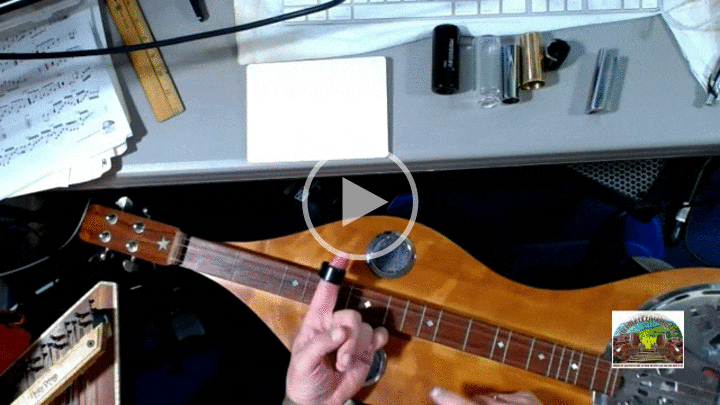Absolute Beginning-Level 1 Hammered Dulcimer Lesson-Steve Eulberg
5:01
Hi.
Steve Eulberg for dulcimer crossing in our string side up absolute beginner series.
We're now going to take a look at how can we play the hammered dulcimer.
We know the parts, but we're trying to figure out where do we go to play it.
Well, if you've noticed by observing that there are some there's a pattern here in these little pieces of plastic that are are on top of the bridges that the strings go over, that's gonna be a really important clue.
In this particular instrument, there's a marked course, which is white.
There's a black one, a white, 2 blacks and a white, 2 blacks and a white, 2 blacks and a white.
And this would be the equivalent of 2 blacks and a white, although the builder has used brass up there instead.
Now the first thing you might think of if you've had some connection with piano is, are these like the black and white keys, but why doesn't look the same?
That's a good first thing to think.
The hammered dulcimer is actually laid out like the white keys of the piano.
It's not laid out chromatically.
It's laid out diatonically.
And when you play the white keys of the piano from c to c, you get the major scale that we're used to hearing and which is very, very common in the Western world.
The way the hammered dulci-bro laid out is if any time I start on any one of these marked courses, in my case they're white and some instruments they're dark or the reverse, but if any time I start on one of those and go up 4, cross over from where I started, and finish the scale, you see I played in what we call the box.
1, 2, 3, 4, and I cross over, 5, 6, 7, 8.
That gives me the major scale, and what goes up must come down.
Now the beauty here is that pattern of playing in the box works anytime I start on any one of the marked courses.
If you don't believe me, let's test it.
We started here.
I'm gonna let you know that in my that's a d where I started.
So that gave me a d major scale.
Now if I was to go up to the next one where I started, a g, d, e, f sharp, g.
What do you know?
A g major scale.
If I go g, a, b, c, a c major scale.
Now, obviously, I'm running out of room up here.
So let's go back down to the lowest marked course on the treble bridge.
There's an a major scale.
Now what works across the treble bridge in this way also works between the bridges in this way.
So if I start at this low marked course over here, and I come to the corresponding marked course over here, this is like going horizontal.
Right?
I'm leaving my hammer separated so you can see where I'm going.
I'm not going to play it that way, but I'm going to demonstrate it that way.
So this is another D box.
This is a D box.
If I start on the G, like I started up here, what do you know?
I've got a G major scale.
Now, let's start on the C.
I got a c major scale.
Let's start on the f.
So the short thing to remember is that if I start on a marked course, play up 4, come back to the other side of the marked course, or the corresponding marked course, I'm always gonna get a major scale no matter where I am on the instrument.
Now, there is one caveat.
There are some instruments, it's called a Michigan tuning or an octave bass tuning, where the 5th relationship across the bridges, like we're playing right now, the boxes all work.
But the bass bridge is tuned to an octave away, and so it might not work on those kinds of instruments.
Bill Webster builds some of those, and there are others who have built and tuned them in those ways.
But in the the wider dulcimer world in the United States, more people are using 5th tune bridges, in which case everything works everywhere.
So that's playing in the box, the first really important thing to remember.
I'll see you in the next lesson.
This sample lesson explains the lay-out of notes on a hammered dulcimer and demonstrates how to play "in the box."
This is the 2nd lesson in our 30 Lesson Absolute Beginning Hammered Dulcimer Course taught by our co-founder, Steve Eulberg.
This course is available as a stand-alone, ala carte course, AND is available to all levels of DulcimerCrossing membership, DIY, Workshop and Mentor.























0 comments
Leave a comment
Please log in or register to post a comment